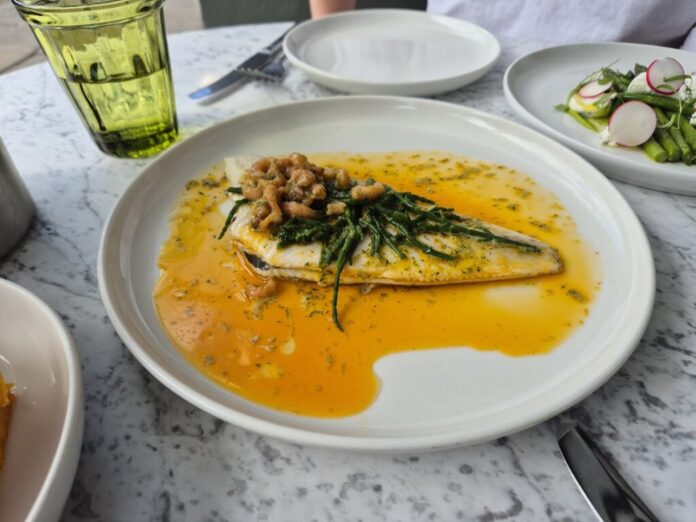To state the obvious, Italians take their food and drink seriously. There’s a saying in Italy: “Non si mangia per vivere ma si vive per mangiare” – we don’t eat to live, we live to eat. With a culinary tradition dating back more than two millennia, the art of the Italian table isn’t just about sustenance—it’s a cultural cornerstone. Before you jet off to the land of pasta and prosecco, familiarise yourself with these unwritten rules that will help you dine like a local and avoid any faux pas.
A Simple, Speedy & Sugary Start to The Day
If you’re accustomed to hearty fry-ups or avocado toast for breakfast, prepare for a change of pace in Italy. Italians typically opt for light, sweet breakfasts rather than substantial savoury affairs. Indeed, Italian mornings are all about sugar and simplicity. Breakfast in Italy looks a lot like dessert in other parts of the world.
The quintessential Italian breakfast consists of a cappuccino or espresso paired with a cornetto (Italian croissant) or other pastry, often enjoyed standing at the bar.
Regional specialities worth sampling include the Roman maritozzo—a soft, sugary brioche bun split and filled with whipped cream, often zested with orange—and the Neapolitan sfogliatella, a delicate, shell-shaped pastry filled with orange-scented ricotta. In Sicily, you might even find locals tucking into gelato-stuffed brioche for breakfast.

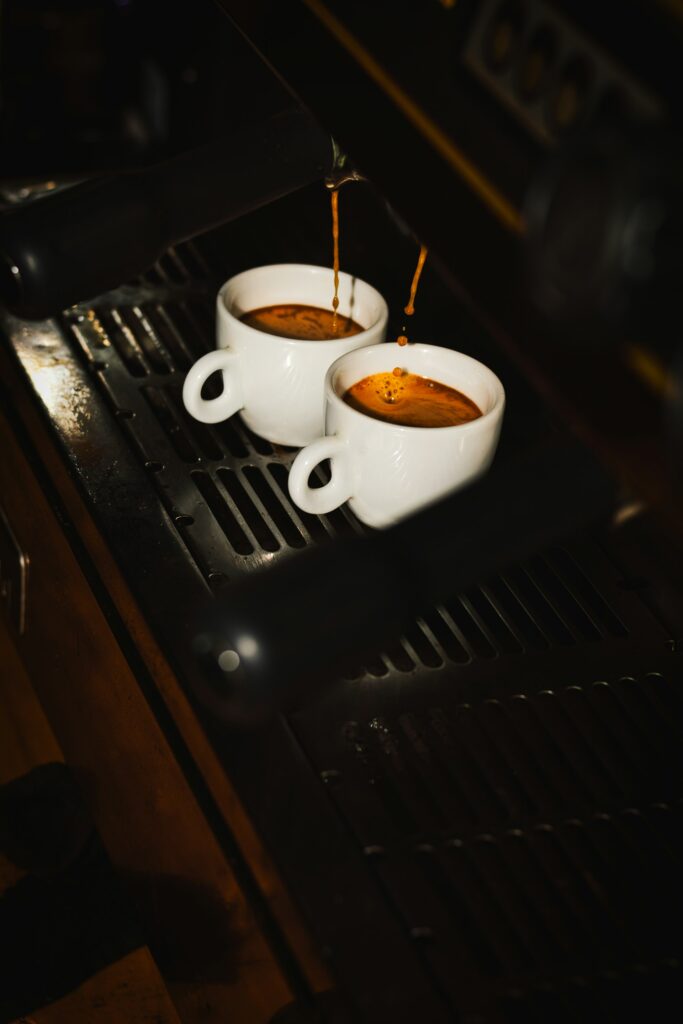
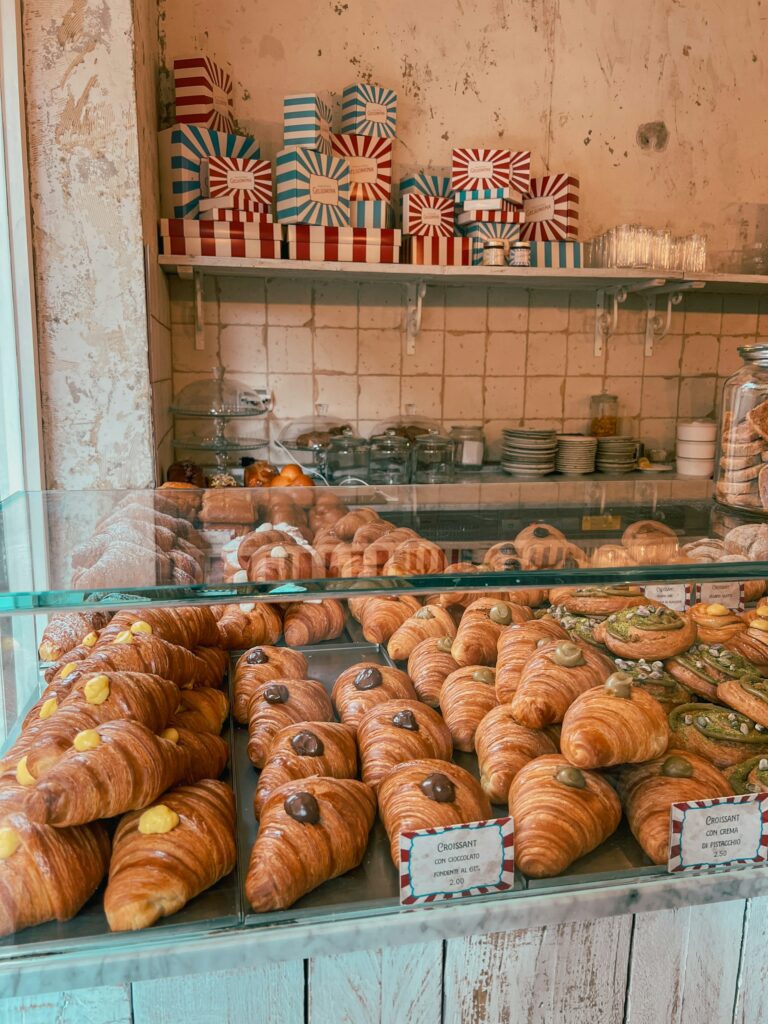
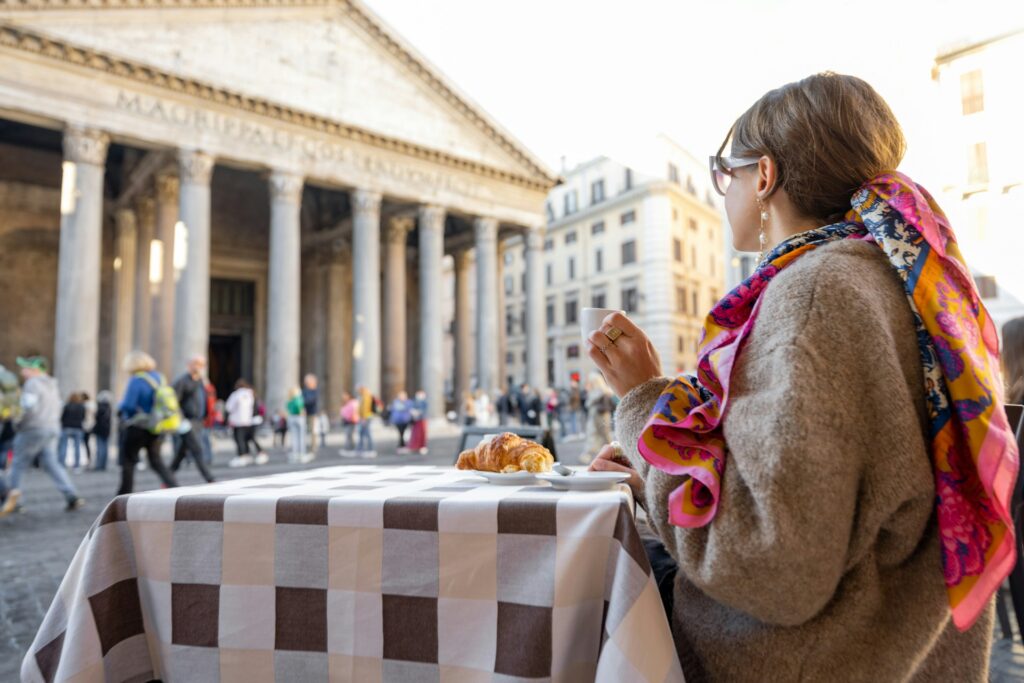
Espresso Rules
The birthplace of espresso is in Italy and the Italians love the stuff. In Italy, espresso is typically characterized by its bold bitterness and rich, heavy body. It generally features minimal acidity and natural sweetness. To compensate for this lack of inherent sweetness, many Italians opt to add sugar to their espresso.
When ordering coffee, embrace the stand-up culture with “caffè al banco” (coffee at the bar). It’s cheaper than sitting at a table and far more authentic. Sip your espresso, savour the moment, then continue your adventures—it’s the Italian way of staying energised whilst exploring. Oh, and rather than ordering a doppio (that’s double espresso), Italians will traditionally make a return trip to the barista if they’re in need of another pick-me-up.
If the intensity of an espresso overwhelms you, there are gentler options. Try a macchiato (espresso with a dollop of milk) or a caffè lungo (espresso with more water). Another coffee drink you’ll find at most cafes is caffè al ginseng. It’s reminiscent of a chai tea latte, with its distinctly nutty flavour from the ginseng root that flavours the arabica bean. During summer, refreshing options include caffè freddo (cold, sweetened espresso) or a caffè shakerato (similar to an espresso martini, minus the alcohol).
Oh, and this might be one of Italy’s most strictly observed culinary rules: cappuccino is exclusively a breakfast beverage. Ordering one after 11 am marks you as a tourist straightaway. Italians believe that milk after a meal hampers digestion, so post-breakfast coffee is typically taken as an espresso (simply order “un caffè”).
Reservations Are Essential
In Italy, restaurant tables aren’t turned quickly as meals are leisurely affairs. This means that when you book a table for 8:30 pm, it’s essentially yours until closing time. Consequently, even if you walk into a restaurant with many empty tables, you might be turned away because those tables have been reserved for later.
For popular eateries, booking ahead is non-negotiable. Last-minute reservations are worth attempting, but don’t be surprised if you’re unsuccessful during peak times. If you do secure a table, try not to be late; arriving up to 15 minutes late is generally tolerated, but it’s considered good form to ring ahead if you’re running behind.
Since we no longer benefit from those “roam like at home” rules that used to apply, it might be worth getting an eSIM in Italy so you can easily call the restaurant if you’re running late. Check with your specific mobile provider for their current roaming policies and potential charges first.
If you’re planning on eating out a lot, it’s definitely worth being connected. Google Maps has helped us many a time from being late to a restaurant by providing real-time traffic updates and allowing us to set “arrive by” times. To choose the best eSIM option, check out websites like Reddit to find discounts like this Nomad discount code to save some extra cash.
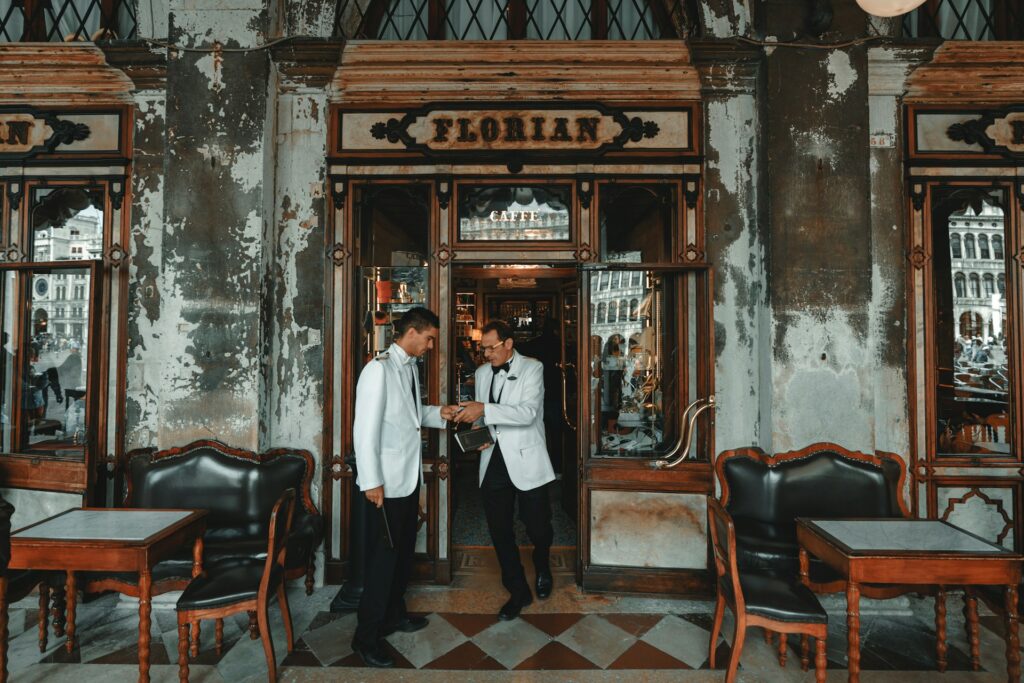
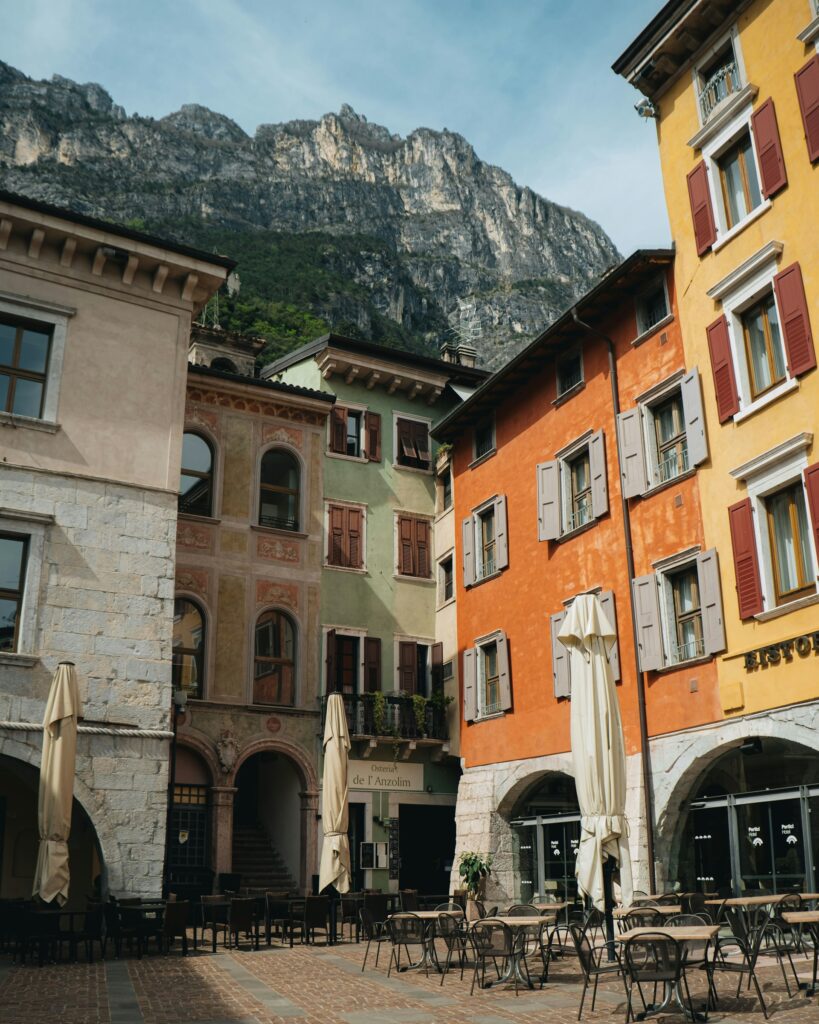
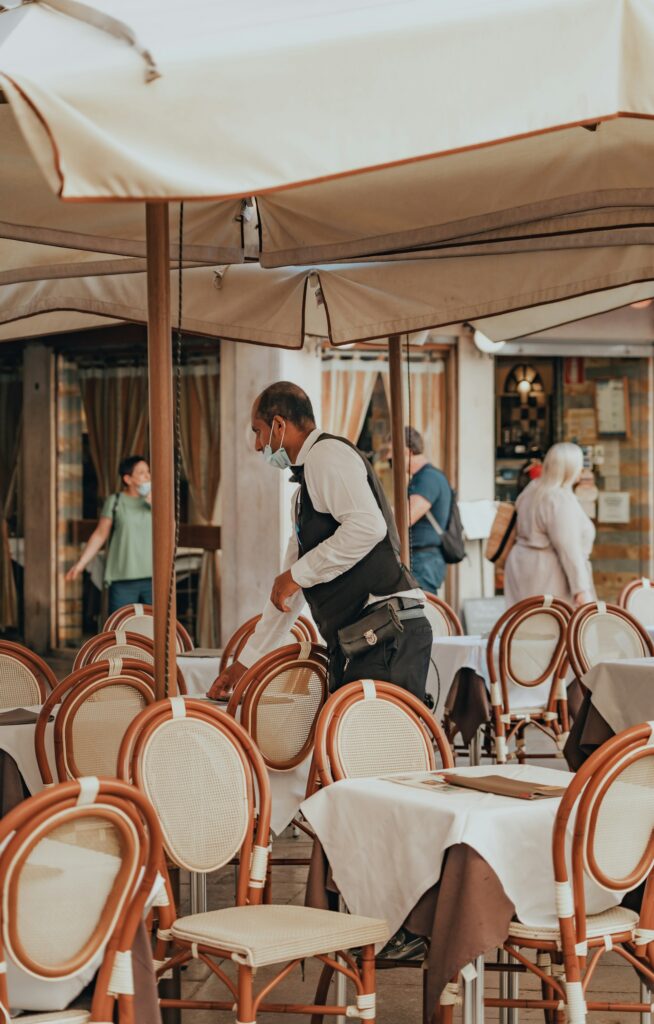
Dinner Is Served Late
Adjust your eating schedule before your Italian holiday, as mealtimes differ considerably from British habits. Lunch typically falls between 1 pm and 2:30 pm, while dinner begins around 8:30 pm and can stretch until 10:30 pm. If you do decide to eat before 8pm, expect to be in the restaurant alone.
Most restaurants close their kitchens between lunch and dinner service (roughly 3 pm until 7 pm), so plan accordingly. Oh, and restaurants serving dinner before 7 pm are catering to tourists rather than locals—best to avoid.
Set Aside A Few Hours To Eat
In Italy, meals aren’t merely about nutrition—they’re social occasions, opportunities to connect, converse, and take a break from life’s demands. Whether for lunch or dinner, proper Italian dining requires time. Even a casual lunch typically lasts at least an hour.
The finest Italian dining experiences are those where you can linger over each course, savouring both the food and the company. While quick options like panini and pizza exist, Italians generally prefer sitting down for proper meals whenever possible. Remember: rushing through a meal is the antithesis of Italian food culture.
Read: Soave, Spaghetti & Strolling: Italy’s Very Best Walking Holidays
Don’t Be Surprised By A Cover Charge
The small shock of the “coperto” charge—typically a modest €1-3 per person—has furrowed many a tourist brow. This isn’t deception but tradition, a standard cover charge for table service, bread, and that grassy-green olive oil that arrives unbidden at your table.
Similarly, the price differential between standing and sitting might seem curious until you understand it as part of Italy’s subtle economic ecosystem. That morning cappuccino costs €2-2.50 while propped against the bar but rises to €4-5 should you choose to occupy a table—a premium not for the coffee but for the real estate and service.
When it comes to tipping, a 10% tip for truly memorable service is considered generous—anything more creates an awkward imbalance in the delicate restaurant ecosystem.
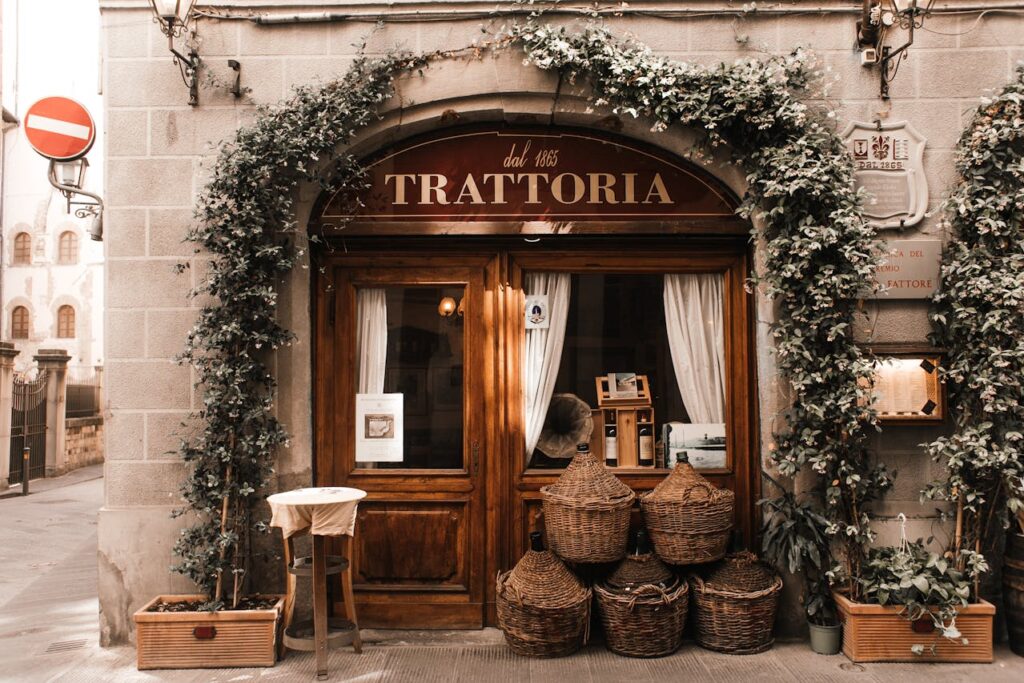
Aperitivo Hour
As afternoon light mellows into evening gold, something remarkable happens in Italian cities. Tables and chairs appear on pavements, glasses begin to glow amber and orange, and the day’s sharp edges soften into what might be Italy’s most civilised invention: aperitivo hour.
More than simply “happy hour” with an accent, aperitivo is a gentle transition between work and dinner, typically falling between 6 pm and 8 pm. The drinks—a bitter-orange Aperol spritz, the more assertive Campari, or perhaps a crisp prosecco—arrive with unexpected generosity: small plates of olives, crisps, focaccia, or more elaborate offerings depending on the establishment.
What distinguishes aperitivo from mere pre-dinner drinks is its intentionality. You’re not simply consuming alcohol but participating in a ritual of decompression, of shifting from day to evening with appropriate ceremony. It’s also always accompanied by complimentary nibbles ranging from crisps and olives to more substantial offerings like bruschetta, focaccia, cheese, and cured meats. Indeed, importantly, Italians rarely drink alcohol without food—even if it’s just a small snack. Just be careful not to fill up on aperitivo snacks if you’ve got dinner reservations!
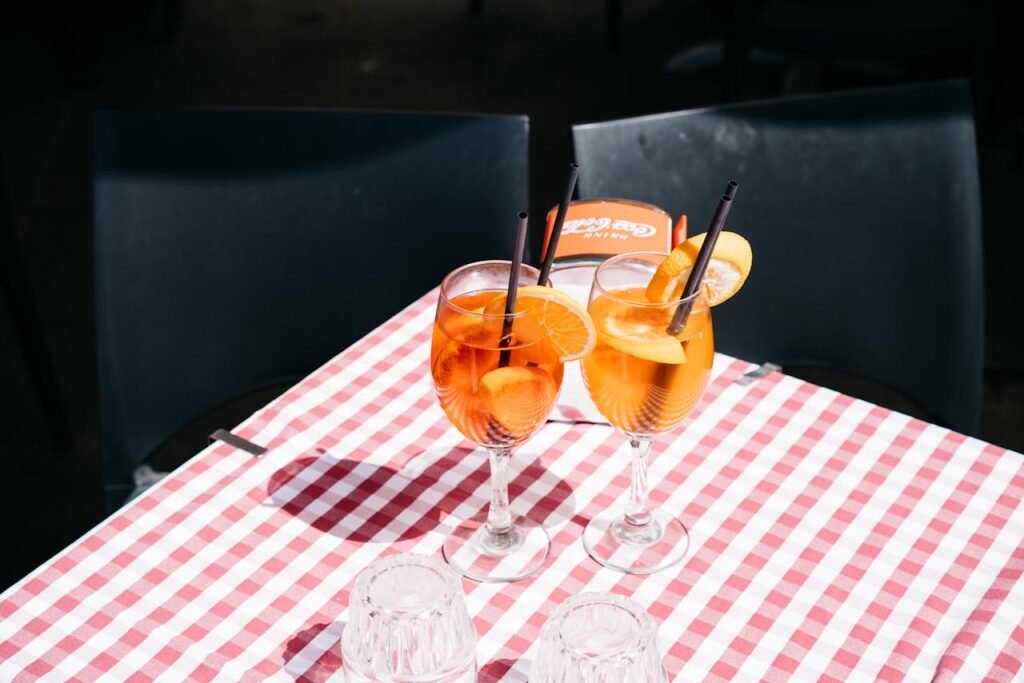
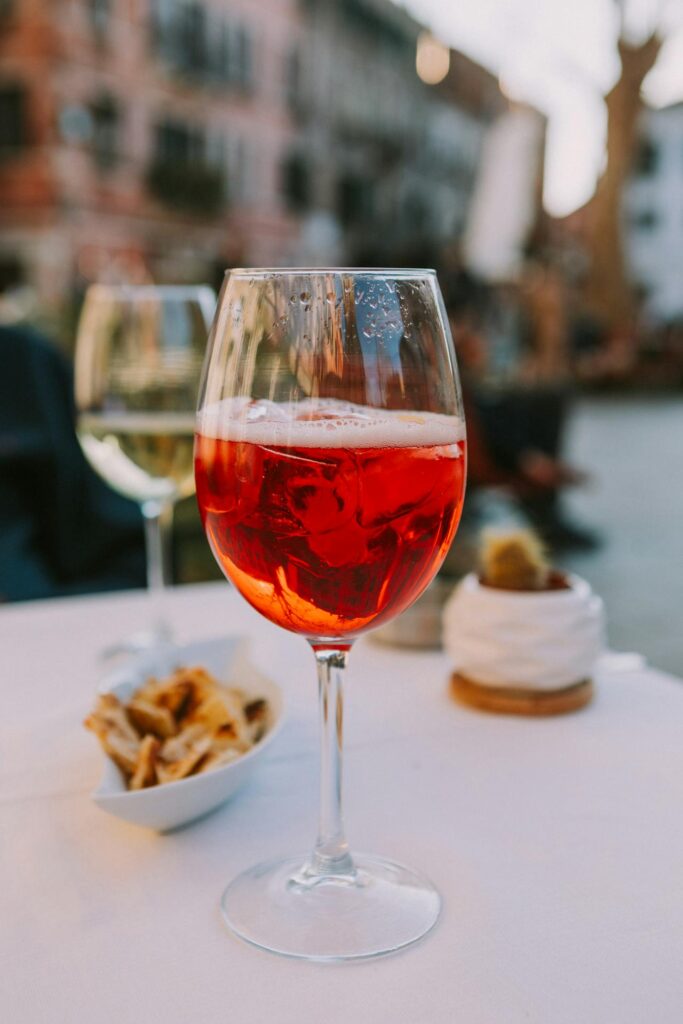
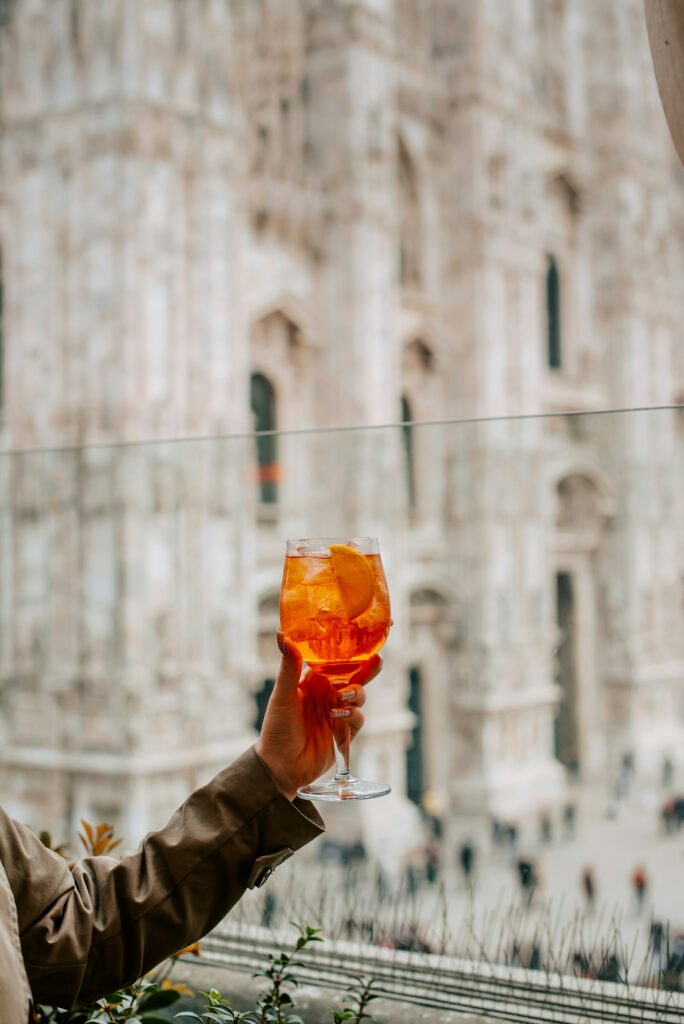
It’s Not An Italian Meal Without Wine
“A meal without wine is like a day without sunshine,” goes the Italian saying, and in the golden light of a Tuscan trattoria, you begin to understand it’s not mere poetic licence but practical wisdom. Wine in Italy isn’t an indulgence but a food in itself, as essential to the meal’s architecture as bread or salt.
Don’t shy away from house wines (vino della casa), which are often locally produced and good quality despite their modest price. Indeed, house wines are often surprisingly characterful, locally produced, and offered at prices that suggest wine is not a luxury but a daily right. These arrive by the carafe—quarter, half, or full litre—to be poured into simple glasses and enjoyed without ceremony. For those wishing to explore further, ask for the “carta dei vini” and don’t hesitate to seek guidance.
The pairing guidelines are simple but effective: red wines generally accompany meat dishes, whites complement seafood. Pizza traditionally calls for beer rather than wine—one of the few exceptions to Italy’s wine-with-meals tradition. And after dinner, the progression continues: first coffee to clear the palate, then perhaps a digestivo—limoncello from the Amalfi lemons, herbaceous amaro, or fiery grappa distilled from grape must—to settle the stomach, prolong the pleasure and provide a satisfying conclusion to your meal.
Read: 5 IDEAL pairings for Italian wine
Avoid Restaurants Serving The “Greatest Hits Of Italy”
Let us offer one reliable method for spotting restaurants to avoid: if the menu reads like a “Greatest Hits of Italy” compilation—Neoplitan pizza rubbing shoulders with Sicilian arancini, Roman carbonara, and Milanese risotto—walk away. In this country of fierce regional pride, authentic cuisine remains deeply regional, and establishments serving excellent food typically specialise in local specialities rather than generic “Italian” fare.
Each region boasts its own culinary traditions. In Rome, trattorias serve the quartet of iconic pastas: carbonara rich with egg and guanciale, cacio e pepe elegantly minimalist with black pepper and pecorino, amatriciana vibrant with tomato, and gricia—carbonara’s predecessor, made without egg. Cross into Tuscany and the vocabulary shifts entirely. You’ll find ribollita, a hearty bread soup born of peasant ingenuity, and pappa al pomodoro. Tuscany also offers bistecca alla fiorentina.
While some dishes have transcended their origins (like spaghetti with tomato sauce), most remain tied to their regional roots.
Part of the profound pleasure of travelling through Italy is experiencing these distinct culinary identities—each region offering its own ingredients, techniques, and flavour profiles.
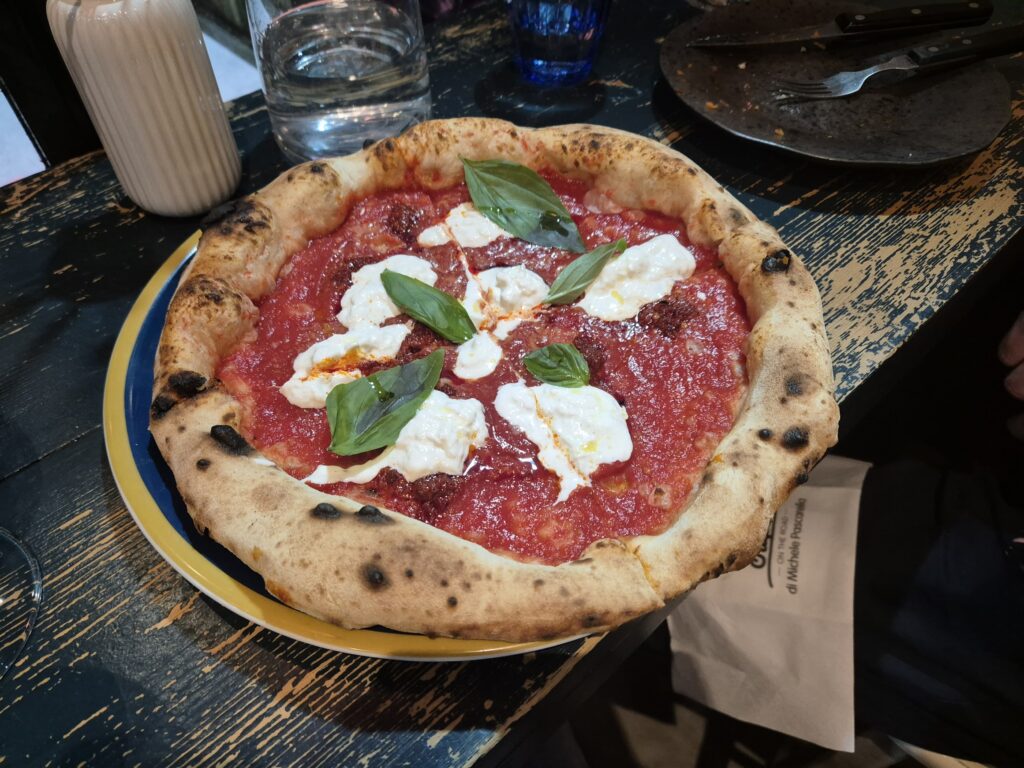
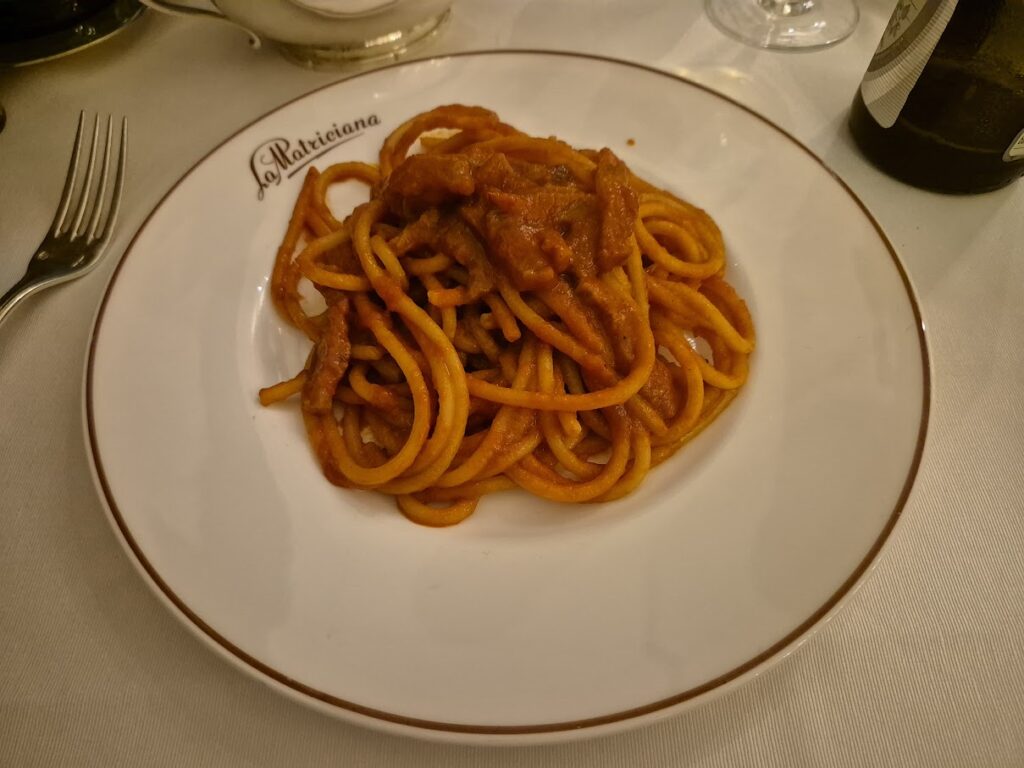
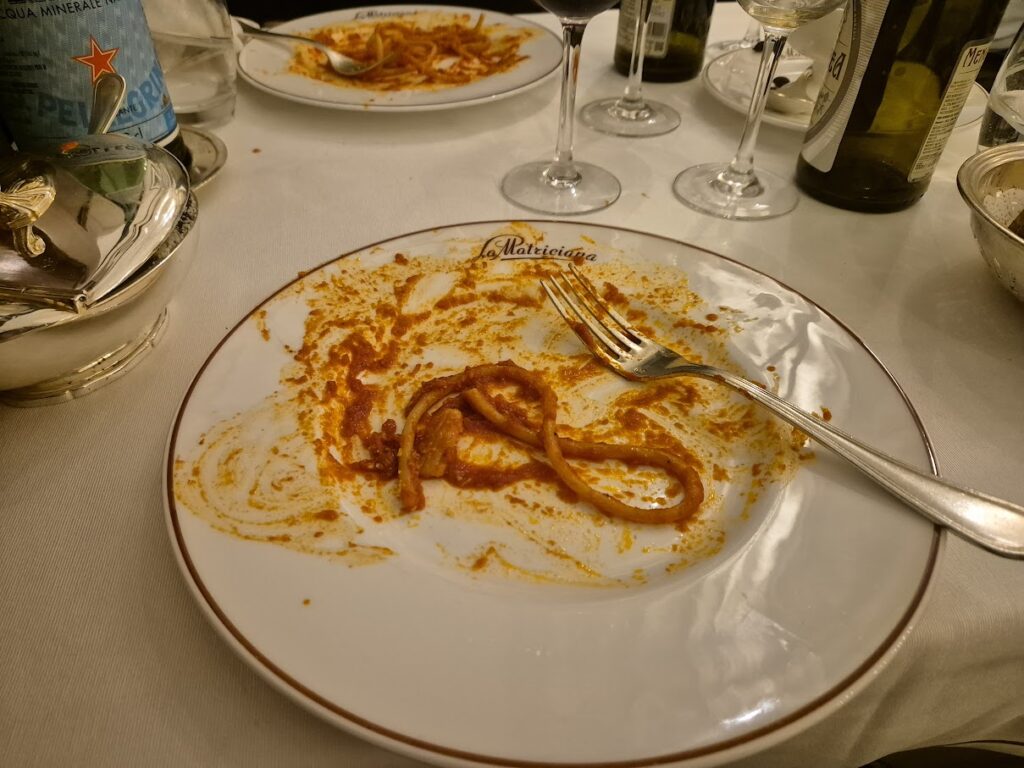
It’s All About Seasonality
Italians have an innate respect for seasonal eating that predates the modern farm-to-table movement by centuries. This principle underpins the exceptional quality of Italian cuisine—ingredients are used when they’re at their flavourful peak.
The Italian menu transforms with the calendar: summer brings tomatoes so intensely flavourful they need only salt and good oil; autumn introduces an orchestra of mushrooms, truffles, and game; winter showcases bitter greens and artichokes; spring arrives with a gentle explosion of green—asparagus, fava beans, and peas so sweet they barely need cooking.
Restaurants often adjust their menus accordingly or offer seasonal specials alongside signature dishes. By embracing seasonality during your visit, you’ll experience Italian cuisine at its most authentic and delicious. Trust local recommendations for seasonal specials—they’re likely to provide your most memorable meals.
Read: The Best Restaurants In Naples, Italy: The IDEAL 22
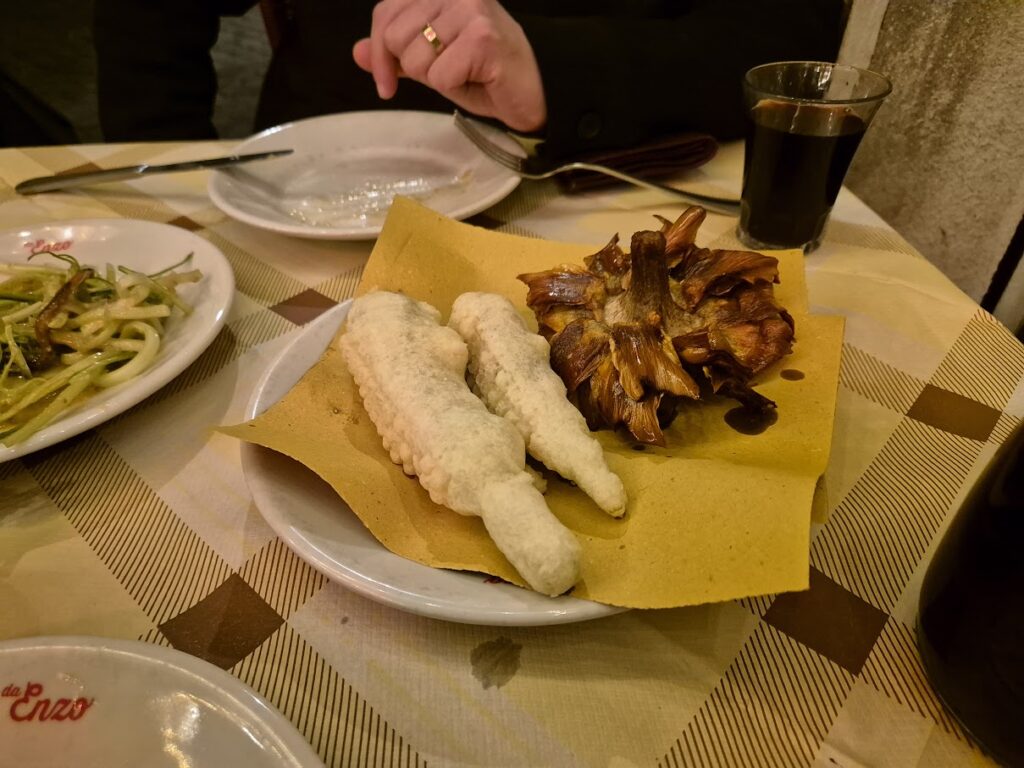
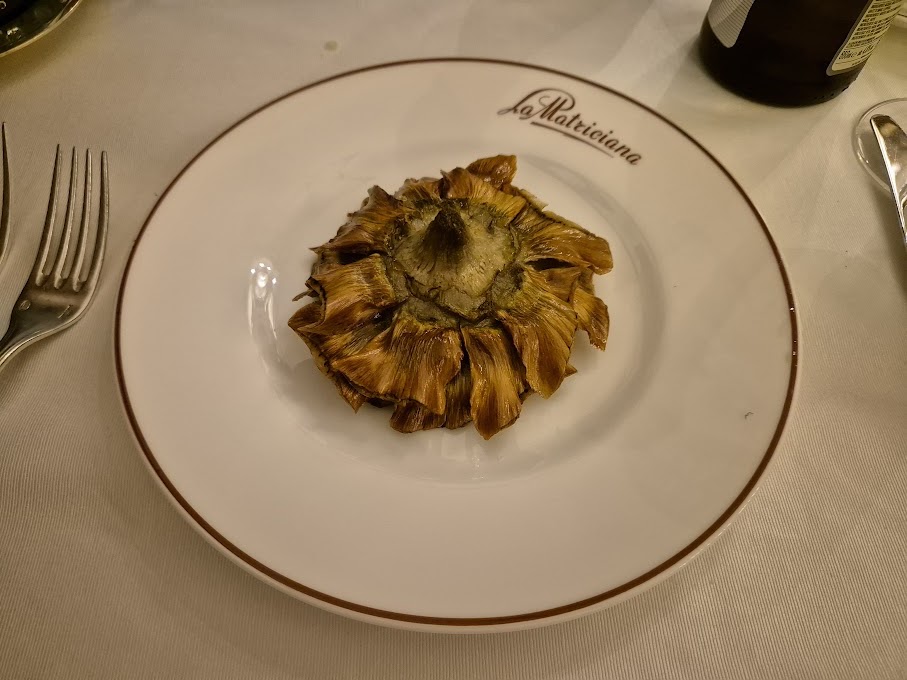
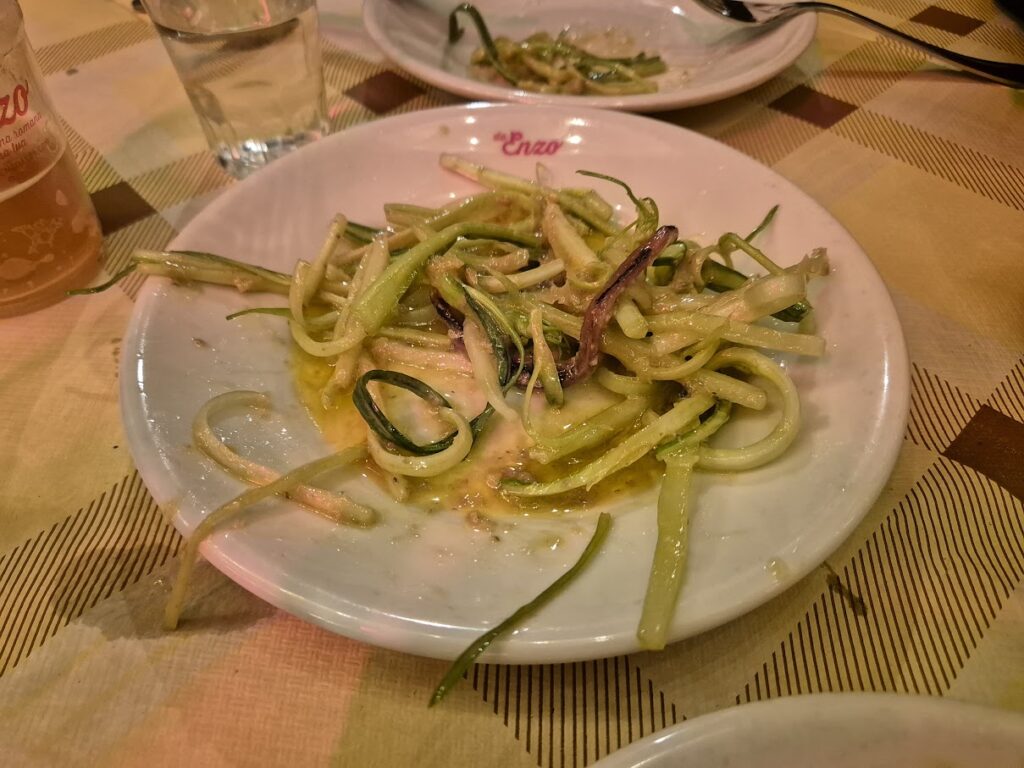
Navigating The Menu
Italian menus follow a structured format with distinct categories. There are the antipasti that open the meal with small bites to awaken the palate; primi continues with pasta, risotto, or soup; secondi presents the protein heart of the meal; contorni offers vegetable sides; and dolci provides the sweet finale.
This structure might suggest that proper Italian dining requires ordering from every section, and while it might be tempting to do so, it’s a misconception that would leave even the most dedicated eater overwhelmed. Instead, consider the menu as offering options rather than obligations. A more realistic approach might be an antipasto, a primo or secondo with a contorno, and perhaps a shared dolce. Indeed, don’t feel obliged to order from every section—Italians certainly don’t for everyday meals.
If you want to sample more dishes without overwhelming yourself, ask about “mezza porzione” (half portions), particularly for pasta courses. Many restaurants will accommodate this request. This approach allows you to construct a meal that suits both your appetite and curiosity without attempting to conquer the entire menu in a single sitting.
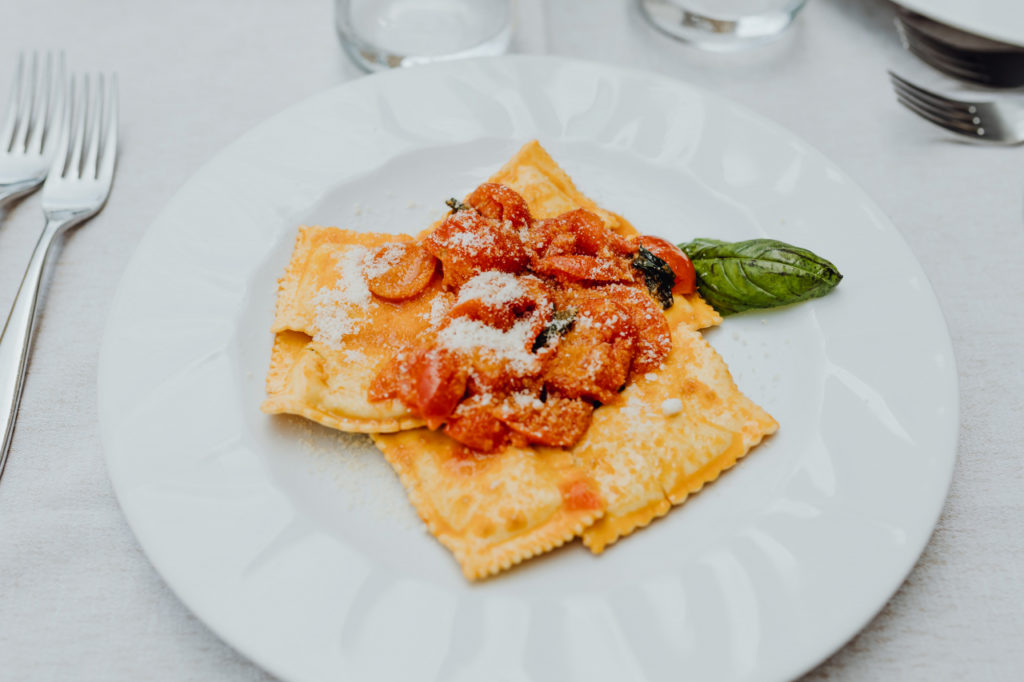
Eating Etiquette
The small choreographies of Italian dining reveal themselves gradually: the proper way to twirl pasta (without a spoon, contrary to cinematic depictions), the rhythm of when to pour wine, the understanding that bread is for eating alongside your meal and mopping up sauce, never as a pre-meal filler.
When it comes to pizza, unless sold by the slice on the street, it is typically personal-sized, uncut, and eaten with knife and fork—though folding and eating by hand is acceptable for those with dexterous fingers and heat-resistant palates. Simply start from the inner part of the pizza and work your way outwards, towards the crust. Never request dipping sauces for pizza, as this would horrify most Italians. As mentioned, Italians never use spoons to twirl pasta. A fork is the only utensil needed, and mastering the twirling technique is part of your Italian culinary education.
“Scarpetta” is the delightful term for using bread to clean your plate of remaining sauce—a practice that acknowledges both the deliciousness of what you’ve been served and the informal pleasure of not letting a drop go to waste. While perfectly acceptable in casual settings, watch your fellow diners for cues in more formal establishments.
Be cautious with cheese—while parmigiano works wonderfully with hearty meat sauces, requesting it for seafood pasta would be considered culinary sacrilege. The delicate flavours of fish would be overwhelmed by strong cheeses.
Lastly, taking leftovers home is uncommon in Italy. Instead of over-ordering, consider requesting half portions or sharing dishes.
Read: 14 Must Try, Iconic Eating & Drinking Experiences In Italy
Learn Language Basics
Even a modest effort to speak Italian will be appreciated. You need not aim for fluency—even a modestly pronounced “buongiorno” (good morning/day) or “grazie” (thank you) opens doors and softens interactions.
For dining, certain phrases prove particularly useful: “Il conto, per favore” (the bill, please) or the slightly more formal “Mi porta il conto” (could you bring me the bill); “Acqua naturale” (still water) or “Acqua frizzante” (sparkling water); and perhaps most importantly, “Era delizioso” (that was delicious)—because genuine appreciation is always welcomed.
This small effort rarely goes unnoticed and often results in warmer interactions, perhaps an extra splash of wine, or a limoncello appearing unbidden at meal’s end.
The Bottom Line
There’s an Italian saying “a tavola non si invecchia,” meaning “you never grow old at the table.” That might explain why you’ll likely see us on your next trip to Italy, still at a table immersing ourselves in Italy’s incomparable food culture. Now you know the basic rules of Italian dining, care to join us?





